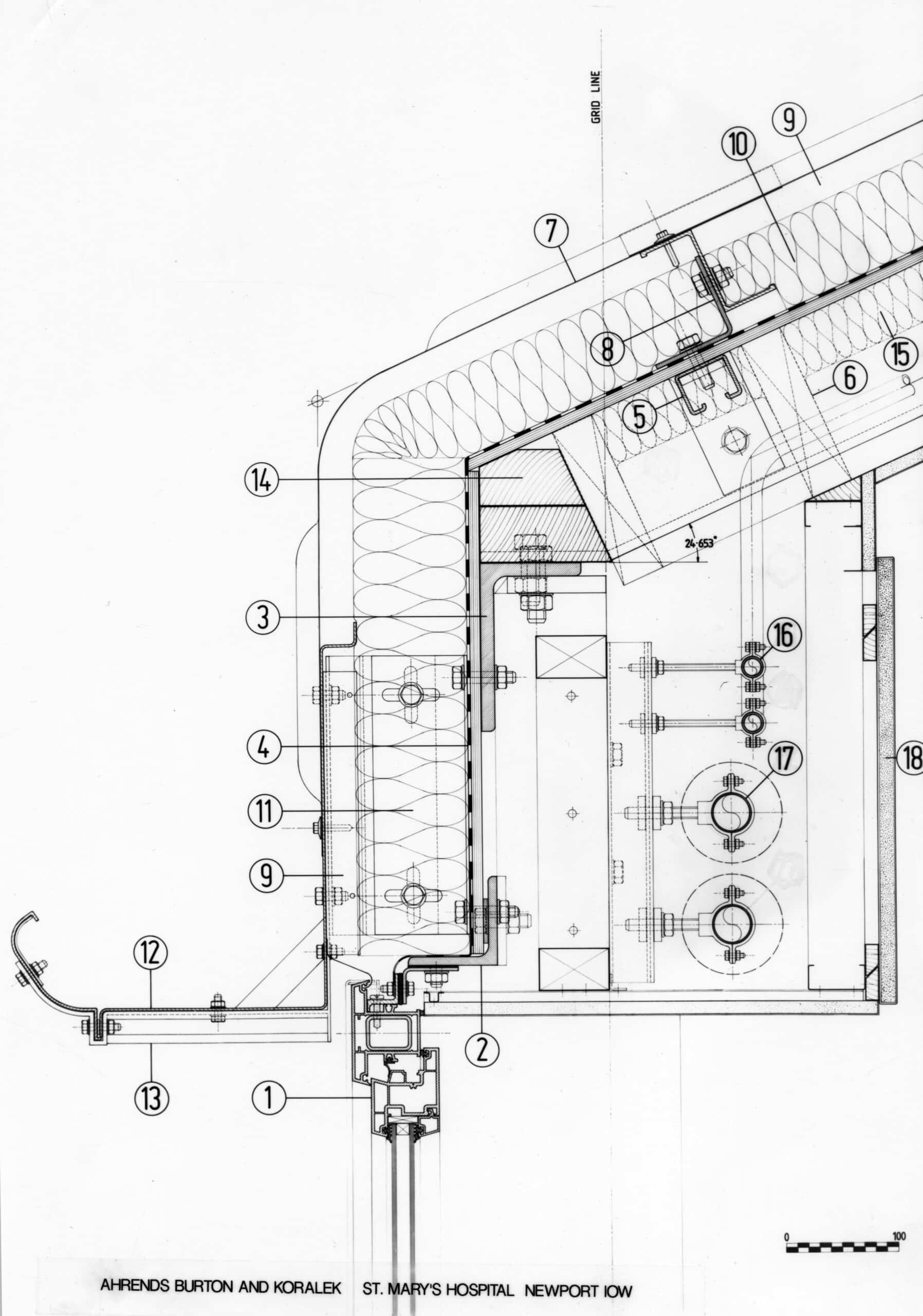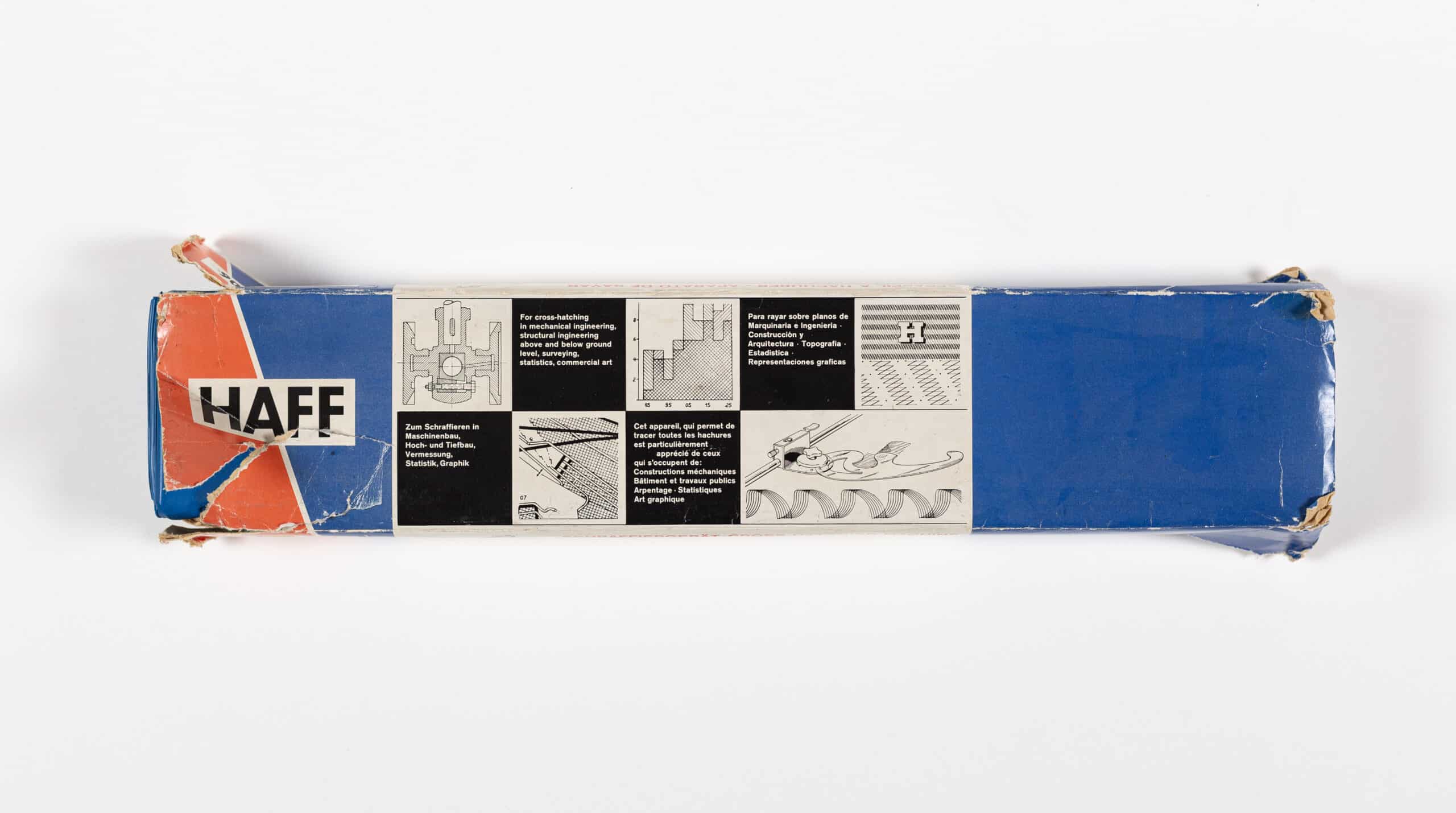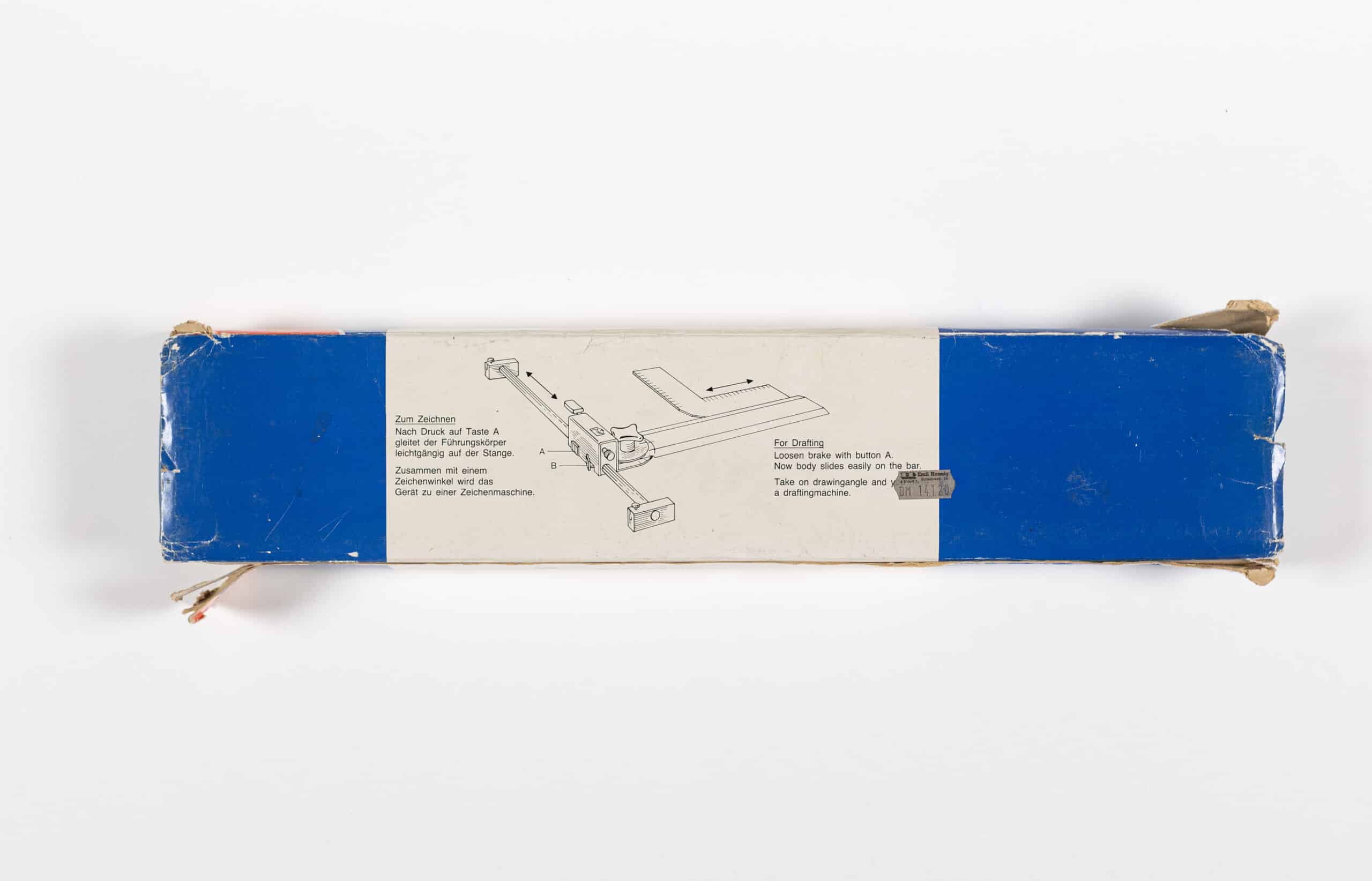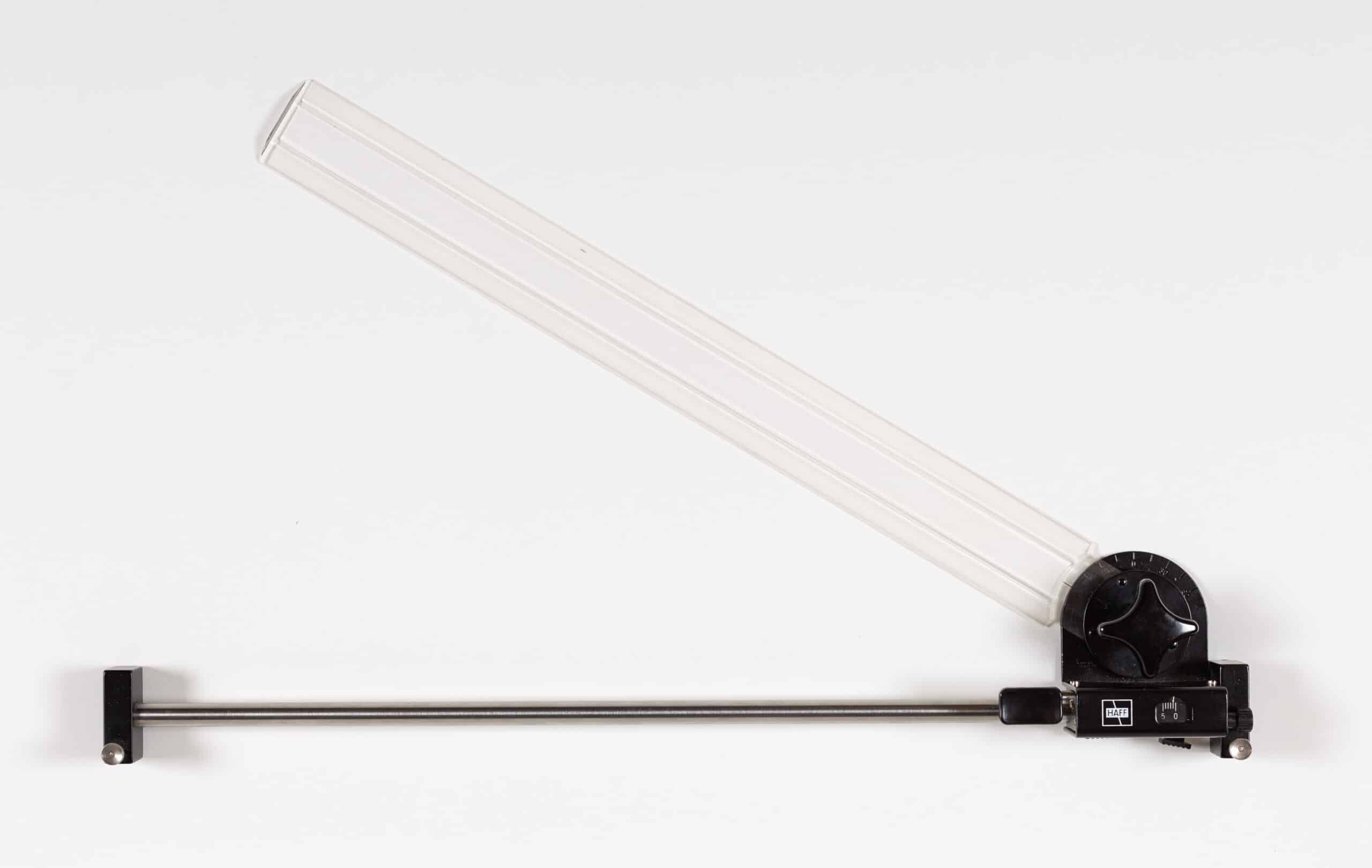Object of Desire — Haff Cross-Hatch Machine
Leaving the Architectural Association and starting at Ahrends Burton and Koralek (ABK) in 1978 was a complete revelation to me. Here, instead of the layers of smudged graphite used to illustrate abstract drawings—as promoted by Dalibor Vesely for instance—graphite powder from your rotary pencil sharpener was used to shade the rear of tracing paper, on which were drawn full-scale steelwork details for Cummins Engine Factory at Shotts. The graphite would be carefully applied with a tissue, and the outline of the shaded element established with a steel erasing shield and plastic rubber, finished with a spray fixative. The drawings, many of them at A0 size, would then be printed on a blue dyeline machine ready for issue to the contractor.
There followed a period working for a commercial architect (Fred Scott’s comment was that they made expensive materials look cheap), and at Terry Farrell and Partners where I worked with Laurence Bain who had a girlfriend working in the office of Stirling Wilford and Associates. There were a lot of cross-connections between staff and these offices, and I returned to ABK to work on St. Mary’s Hospital in Newport on the Isle of Wight.

Everyone was doing competitions in their spare time, and we were all in thrall to the drawings coming out of the office of Stirling Wilford, as well as those by Leon Krier, Werner Kreis, Ulrich Schaad, and others we knew as teachers and connections to the various architectural offices.
By now graphite shading was decidedly old hat, and Letraset too expensive and ineffective. But then the secret was revealed! Just set the scale and angle, and press the button to move the straight edge in perfectly equal increments ready for inking; I just had to have the Haff Cross-Hatching Machine. Fortunately for me, Laurence Bain, who was traveling back and forth to Germany picked one up for me. The feeling was just like getting my first copy of Abbey Road.



Jeremy Peacock is an architect. He was associate architect at Ahrends Burton and Koralek from 1982 to 1994, working on a number of significant projects including the New British Embassy in Moscow. He was director of Formwork Architects from 1995 until 2019, before opening his solo practice JP Architect in 2020.

– Marco Iuliano